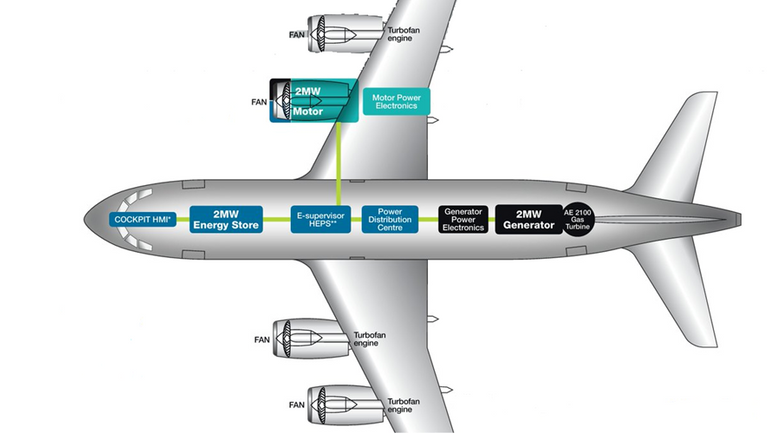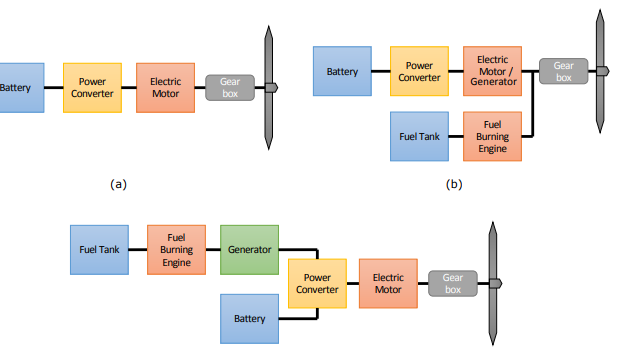
last week i promised to be discussing on the hybrid system for an aircraft.
i shall be discussing on the hybrid propulsion system, the composition and the step by step in these work. suffice to state that this is my post-graduate thesis research work at the air force institute of technology kaduna nigeria.
Hybrid-electric propulsion systems (HEPS) employs the combination
between two technologies by utilizing both Internal Combustion Engines (ICEs) or Gas turbine (GT) and Electric Motors (EMs) together with each operating at their respective optimum capacity.
By taking advantage of both electric motor and internal combustion engine, hybrid-electric propulsion systems provide not only a benefit in fuel saving but also a reduction in takeoff noise and the emission levels. source

Picture of Hybrid
The advantage of the hybrid powertrain, is the low noise, environmental friendly propulsion system,and low fuel consumption.
#METHODOLOGY
Now let take a look at the methodology employed for my research work.
The propulsion components used in the simulation of a HEPS and their characteristic values are introduced. In the choice of propulsion component, certain parameters are put into consideration. And these includes the gravimetric density and component weight respectively. The propulsion components include gas turbine, electric motor, batteries, generator, and power management and control system unit. This work shall be focusing more on the use of Gas turbine in the design and development of the hybrid electric propulsion systems. This design shall be employing the use of a brushless motor. For this case, a torque will be applied to the motor’s shaft which will rotate the internal casing and generate electricity. In addition, this research seeks in improving a better simulation environment and helping to identify areas and sections of HEPS that could be used to improve efficiency.
The hybrid-electric aircraft modelled in this work can be divided into the battery packs, low-voltage direct current (LVDC), high-voltage direct current (HVDC) and the aircraft. The loads supplied by the LVDC include the aircraft lighting, avionics and heating. The HVDC powers the propulsion of the aircraft.
Next week i shall be focusing on the integral part of the methodology on this design . that is the motor , structural battery technology, and the electric motor model.
i hope to see your comment and question . and i promise to reply them accordingly.
The advantages of powering aviation with alternate sources of energy can not be overemphasized and gladly Heps would reduce the carbon footprint left by aeroplanes as well as the noise pollution.
Amazing post sir, please we really appreciate this content and hope to see more of this.
This is my entry for the @comet.ranker operation #ping contest
Yes, the alternative source of energy for aviation would go along way in aviation power management for a safer and noiseless environment. I am looking forward to the contest.
This is great. It will be good to see the aviation sector going electric.
Descending can fully be utilized to charge the batteries I believe. Though the descending time is very little, I still think every little help. The outer surface of the flights can also be made of silicon material that can be used as panels too.
There will be a lot of weight penalty.
Congratulations @stevequest84! You have completed the following achievement on the Hive blockchain and have been rewarded with new badge(s):
Your next target is to reach 200 upvotes.
You can view your badges on your board and compare yourself to others in the Ranking
If you no longer want to receive notifications, reply to this comment with the word
STOPCheck out the last post from @hivebuzz: